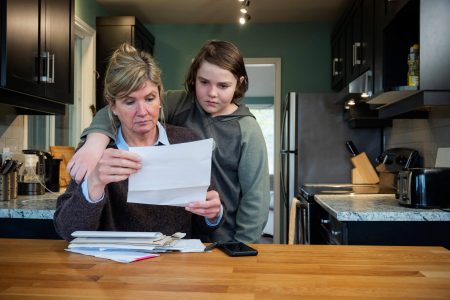SDI Productions/Getty Images
Key takeaways
- Most VA loan borrowers pay a VA funding fee. The fee is equal to a percentage of the loan amount, and can be paid upfront at closing or bundled into the loan.
- The funding fee costs less if it’s your first time getting a VA loan or you’re doing a VA streamline refinance.
- The funding fee makes it possible for mortgage lenders to offer VA loans without needing a down payment from the borrower.
The VA loan program allows U.S. service members and veterans to buy a home with no down payment. The trade off: You’ll pay a VA funding fee, which is a percentage of the mortgage. Here’s why VA lenders charge this fee, how much yours will cost and more.
What is the VA funding fee?
With few exceptions, most VA loan borrowers pay a VA funding fee. This fee is a one-time charge that enables borrowers to take out a VA loan without needing to make a down payment.
The cost of the VA funding fee is a percentage of your mortgage, which varies by borrower based on:
- Whether you’re buying a home or refinancing
- Whether it’s the first time you’ve obtained a VA loan
- Whether you’re making a down payment (and, if so, how much)
Why does the VA funding fee exist?
Although VA loans are offered by many types of lenders, they’re guaranteed by the U.S. Department of Veterans Affairs. This guarantee protects lenders from loss if the borrower were to default and stop paying back the loan. The VA loan funding fee is designed to help reduce this risk and without it, taxpayers would ultimately be on the hook for defaults.
How does the VA funding fee differ from mortgage insurance?
The VA funding fee only applies to VA loans. In contrast, mortgage insurance applies to borrowers taking out a conventional or FHA loan with less than 20 percent down. Both the funding fee and mortgage insurance help protect the lender, and the costs for each are based on various factors, including the amount of the mortgage. However, the funding fee is a one-time charge, whereas with mortgage insurance, borrowers pay ongoing premiums.
How much is the VA funding fee?
Here’s how much you’ll pay for the VA funding fee, whether you’re buying a home as active-duty military, a veteran or a member of the Reserve or National Guard. The same fee structure applies if you’re taking out a VA construction loan.
| Down payment | First use | After first use |
|---|---|---|
| Less than 5% | 2.15% | 3.3% |
| 5%-9.99% | 1.5% | 1.5% |
| 10% or more | 1.25% | 1.25% |
There’s at least one exception to the after-first use fee: If you used your previous entitlement for a manufactured home, you might only have to pay the VA funding fee at the first use rate.
Congress calculates the VA funding fee scale based on the costs of running the VA loan program. The latest fee structure took effect on April 7, 2023. With that change, if you put less than 5 percent down, the VA funding fee for first use cases fell from 2.3 percent to 2.15 percent. The subsequent use funding fee went from 3.6 percent to 3.3 percent. The fees could change again in the future.
So what might the VA funding fee cost you? Let’s say you took out a mortgage for $300,000 and made no down payment at all. Since it’s your first time using a VA loan, the funding fee, based on a 2.15 percent charge, would cost you $6,450.
VA funding fee for refinancing
You can also use the VA loan program to refinance your mortgage. The funding fees are:
| Refinance type | First use | After first use |
|---|---|---|
| Interest Rate Reduction Refinance Loan (IRRRL) | 0.5% | 0.5% |
| Cash-out refinance | 2.15% | 3.3% |
VA funding fee exemptions
While most VA loan borrowers need to pay the funding fee, there are a few exceptions. You won’t have to pay this fee if you’re:
- Disabled and receiving VA compensation for a disability connected to your service
- Receiving military retirement or active-duty pay in lieu of compensation for a service-connected disability
- On active duty and you’ve been awarded the Purple Heart
- Eligible to receive compensation as the result of a pre-discharge
- A surviving military spouse whose partner died from a service-related disability, or died in service and you’re receiving Dependency and Indemnity Compensation
How to pay the VA funding fee
You can pay the VA funding fee in one of two ways:
- Upfront in cash with the rest of your closing costs
- By rolling the fee into your mortgage, paying it over time with interest
If you can afford to pay the fee at closing, you’ll save money on interest.
VA funding fee refunds
If you already paid a VA funding fee in the past, you might be able to recoup that if you wind up receiving compensation for a disability related to your service. This is a unique situation, so contact a VA loan expert to review your case. You can talk to a VA loan officer by calling 877-827-3702, Monday through Friday from 8:00 a.m. to 6:00 p.m. Eastern Time.
FAQ
-
The VA funding fee structure is the same whether you’re buying a home with less than 5 percent down or doing a cash-out refinance: 2.15 percent for first-time use and 3.3 percent for each subsequent use. For IRRRLs, the funding fee is just 0.5 percent. If you’re buying a home with more than 5 percent down, the fee varies based on the size of your down payment and whether it’s your first time getting a VA loan.
-
You can ask the seller to cover some or all of the VA funding fee as a concession. However, the seller can’t pay more than 4 percent of the total home loan in concessions, and they’re not required to pay your funding fee.
-
As with any mortgage, your VA loan can come with closing costs like a lender origination fee, recording fees and title insurance.
Read the full article here












